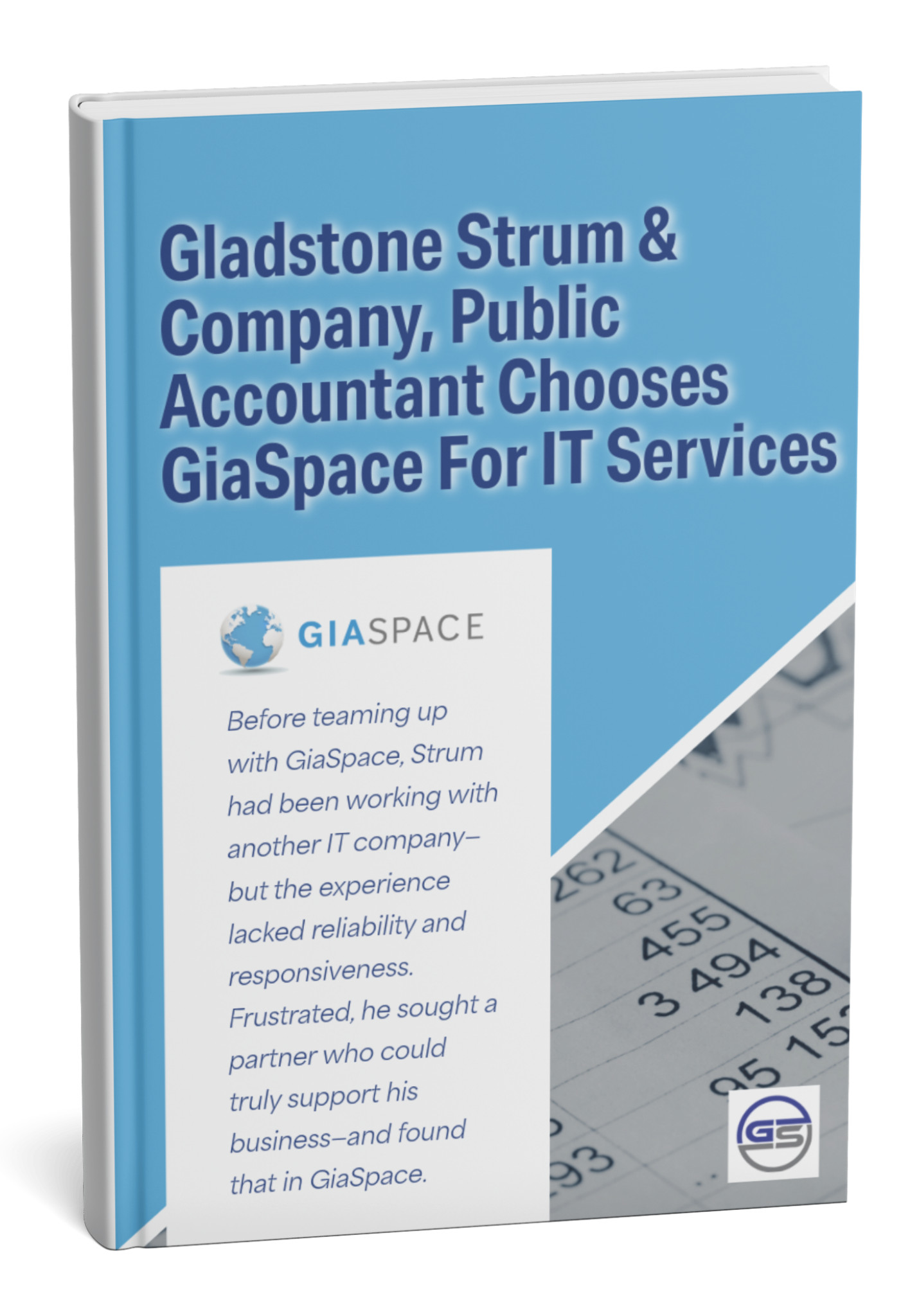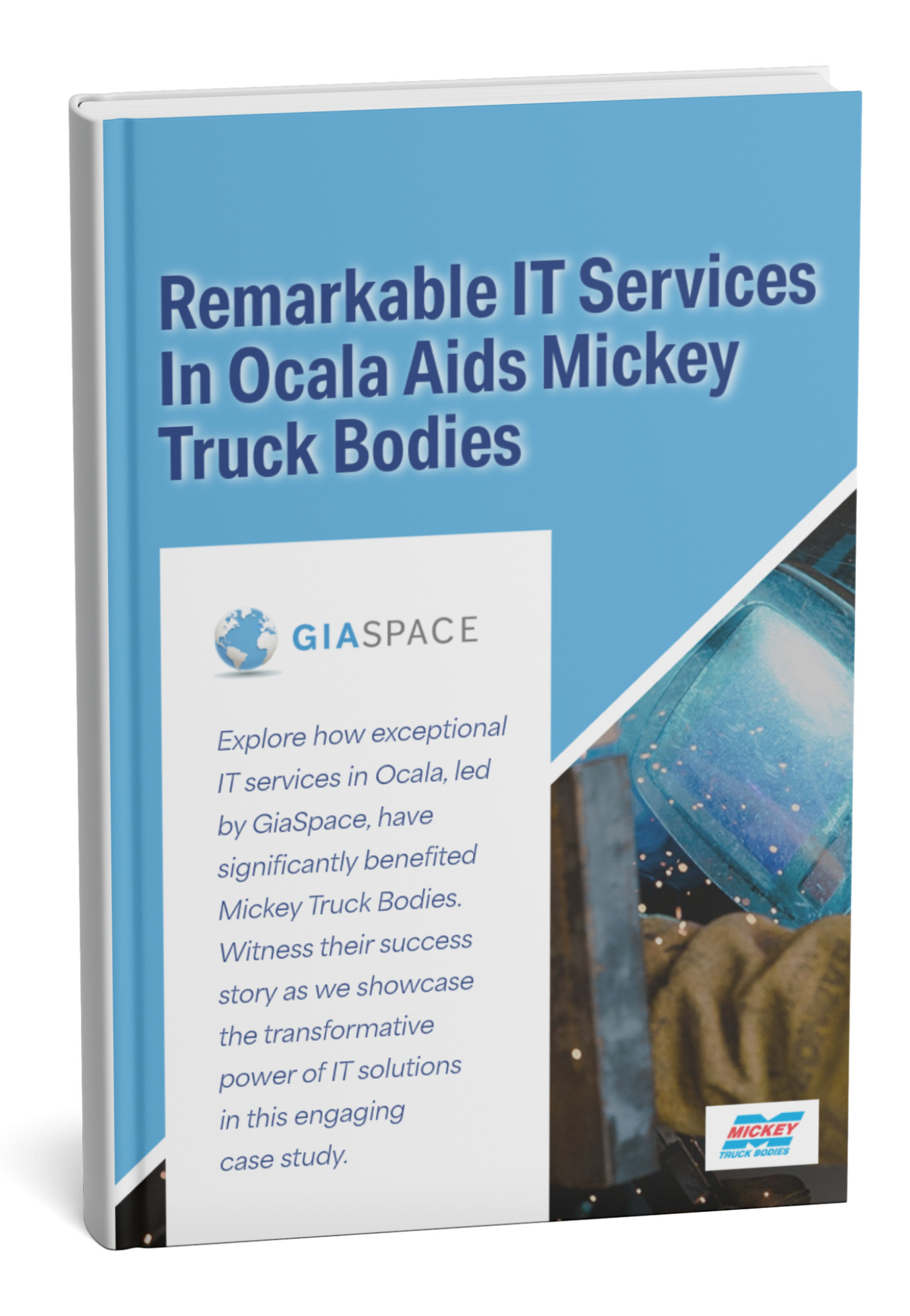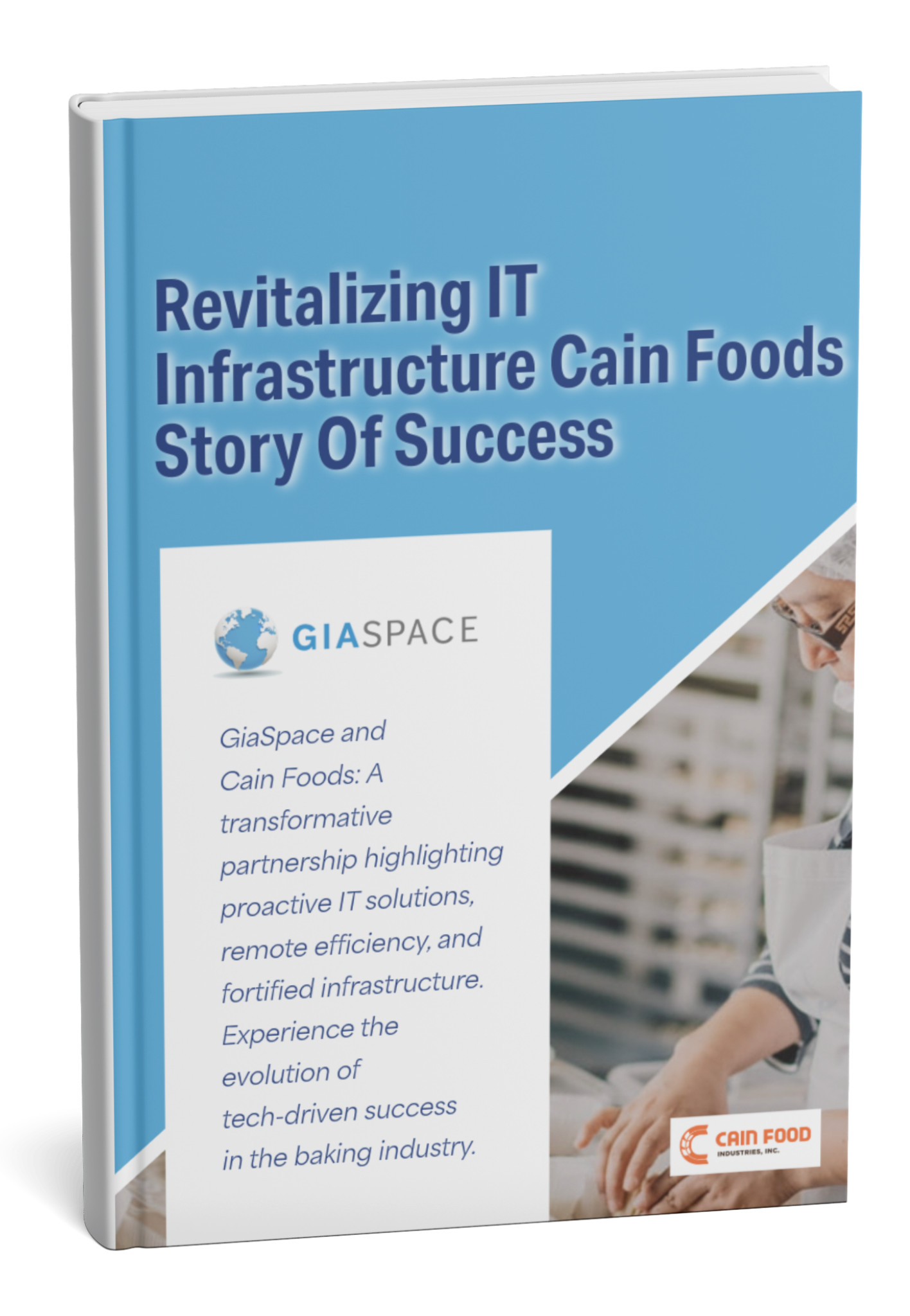Unlock scalability & efficiency: Explore essential cloud migration strategies and how GiaSpace simplifies your move to the cloud for Florida businesses, ensuring seamless transition and future growth.
What is Cloud Migration? A Basic Introduction for Businesses
In today’s fast-paced digital landscape, the phrase “cloud migration” is more than just tech jargon – it’s a strategic imperative for businesses aiming for agility, efficiency, and growth. But what exactly does it mean? Simply put, cloud migration is the process of moving your digital assets – applications, data, IT processes, and entire infrastructure – from on-premises servers or a different cloud environment to a new cloud-based infrastructure.
Think of it as moving your business’s entire digital operations into a highly flexible, scalable, and secure virtual space. This move isn’t just about shifting files; it’s about transforming how your business operates, making it more resilient, accessible, and ready for the future. From small startups in Gainesville to large enterprises in Miami, understanding cloud migration is the first step toward unlocking unparalleled operational advantages.
Why Should My Business Consider Cloud Migration? (Key Benefits & Drivers)
The decision to move to the cloud isn’t just a trend; it’s a strategic move driven by tangible benefits that directly impact your bottom line and competitive edge. For Florida businesses navigating a dynamic market, these advantages are more crucial than ever:
- Cost Savings: Say goodbye to hefty upfront hardware investments, ongoing maintenance, and spiraling energy bills. Cloud models transform CapEx into OpEx, allowing you to pay only for what you use, often leading to significant long-term savings.
- Enhanced Scalability & Flexibility: Business growth in Florida can be rapid. The cloud empowers you to scale your resources up or down in an instant, matching demand without over-provisioning or experiencing performance bottlenecks. Need more storage for hurricane season data backups? Done. Expanding to a new market? Seamless.
- Improved Security & Disaster Recovery: Leading cloud providers offer robust security infrastructures often superior to what most individual businesses can afford on-premises. With automated backups and geographically dispersed data centers, the cloud ensures business continuity, even in the face of unexpected disruptions.
- Increased Agility & Innovation: Cloud environments foster rapid development and deployment of new applications and services. This agility allows your business to innovate faster, respond quickly to market changes, and stay ahead of the competition.
- Remote Work Enablement: The modern workforce is increasingly distributed. Cloud solutions empower your teams to access critical applications and data securely from anywhere, fostering collaboration and productivity whether they’re in Orlando, Fort Lauderdale, or working from home.
The 6 R’s of Cloud Migration Strategies Explained (Rehost, Replatform, Refactor, Repurchase, Retire, Retain)
Navigating your cloud journey requires a clear roadmap, and the industry has broadly categorized migration approaches into what’s known as the “6 R’s.” Understanding these strategies is fundamental to choosing the right path for your applications and data:
- Rehost (Lift and Shift):
- What it is: Moving applications and data “as is” from on-premises to the cloud with minimal changes. It’s like picking up your house and putting it on a new plot of land.
- When to use it: Ideal for quick migrations, testing the cloud environment, or for applications that are difficult to modify. It’s often the fastest and least disruptive initial step.
- Replatform (Lift, Tinker, and Shift):
- What it is: Moving applications to the cloud, making minor optimizations to leverage cloud capabilities without changing the core architecture. For example, moving a database from an on-premises server to a managed cloud database service.
- When to use it: When you want some cloud benefits (like managed services) without a full rewrite, improving performance or cost efficiency.
- Refactor/Rearchitect:
- What it is: Redesigning and rewriting portions of an application to fully utilize cloud-native features and services. This involves significant code changes.
- When to use it: For applications that are critical to your business, require high scalability, or where you seek maximum long-term cloud benefits and cost optimization.
- Repurchase (Drop and Shop):
- What it is: Moving from an existing application to a new, cloud-native Software-as-a-Service (SaaS) solution. For example, switching from an on-premises CRM to Salesforce.
- When to use it: When a commercial off-the-shelf cloud solution better meets your needs than migrating and maintaining your existing application.
- Retire:
- What it is: Identifying applications that are no longer needed or are redundant and decommissioning them.
- When to use it: Before migrating, conducting an inventory helps streamline your environment and reduce unnecessary migration efforts.
- Retain:
- What it is: Deciding to keep certain applications or data on-premises, often due to strict regulatory compliance, specific performance requirements, or simply because they don’t benefit from cloud migration.
- When to use it: For applications where the cost or complexity of migration outweighs the benefits, or where a hybrid cloud approach is preferred.
How to Choose the Right Cloud Migration Strategy for Your Business?
Selecting the optimal cloud migration strategy isn’t a one-size-fits-all decision. It requires a deep understanding of your business goals, existing IT infrastructure, application dependencies, and budgetary constraints. Here’s how GiaSpace helps you navigate this critical choice:
- Comprehensive Assessment: We start by evaluating your current IT environment, identifying all applications, data, and infrastructure components. This includes understanding their dependencies, performance requirements, and security needs.
- Business Objectives Alignment: Your cloud strategy must align with your overarching business goals. Are you aiming for cost reduction, increased agility, disaster recovery, or enabling remote work? Your objectives will heavily influence the “R” strategies chosen.
- Application Suitability: Not all applications are created equal. Some are perfect candidates for “lift and shift,” while others might benefit immensely from a “re-architect” approach. We analyze each application’s complexity, age, and potential for cloud native optimization.
- Risk vs. Reward Analysis: Every strategy carries different levels of risk and potential reward. We help you weigh these factors, ensuring that the chosen path minimizes disruption while maximizing your return on investment.
- Cost Implications: We provide clear cost projections for each strategy, including migration expenses, ongoing cloud consumption, and potential savings, ensuring financial transparency throughout the decision-making process.
Our expert consultants work closely with your team to develop a tailored migration blueprint that makes sense for your unique business in Florida.
Key Steps in a Successful Cloud Migration Plan (Assessment, Planning, Execution, Optimization)
A successful cloud migration is a carefully orchestrated process, not a spontaneous leap. At GiaSpace, our structured approach minimizes risk and maximizes efficiency, guiding your business through every critical phase:
- Phase 1: Assessment and Discovery:
- What it is: A deep dive into your existing infrastructure, applications, data, dependencies, and security posture. We identify what you have, how it works, and where it resides.
- Why it’s crucial: This foundational step allows us to understand the scope and complexity of your migration, identify potential challenges, and determine the most suitable cloud environment.
- Phase 2: Planning and Strategy Development:
- What it is: Based on the assessment, we define your cloud architecture, select the appropriate cloud provider (AWS, Azure, Google Cloud), choose the 6 R’s strategies for each workload, and create a detailed migration roadmap. We also establish clear objectives, KPIs, and a robust security framework.
- Why it’s crucial: A well-defined plan mitigates risks, ensures clear expectations, and provides a precise sequence of actions, keeping your business operations smooth.
- Phase 3: Execution and Migration:
- What it is: The actual movement of applications and data. This phase involves setting up cloud environments, performing data transfers, reconfiguring applications, and rigorous testing. We prioritize minimizing downtime and ensuring data integrity.
- Why it’s crucial: This is where the plan comes to life. Our experienced team manages the technical complexities, ensuring a seamless transition with minimal disruption to your daily operations.
- Phase 4: Optimization and Post-Migration Management:
- What it is: The migration isn’t the end. We focus on optimizing your cloud resources for performance and cost, implementing monitoring tools, ensuring ongoing security, and providing continuous support.
- Why it’s crucial: The cloud is dynamic. Continuous optimization ensures you’re always leveraging the latest features, maintaining peak performance, and realizing the full long-term benefits of your cloud investment.
Common Challenges in Cloud Migration and How to Overcome Them
While the benefits of cloud migration are immense, the journey isn’t always without its hurdles. Being aware of potential challenges allows for proactive planning and smoother transitions.
- Data Security & Compliance Concerns: Moving sensitive data to the cloud raises questions about data privacy, regulatory compliance (like HIPAA, PCI DSS for Florida businesses), and overall security.
- Overcoming: Partner with a cloud expert like GiaSpace who specializes in robust cloud security frameworks and understands industry-specific compliance requirements. Implement strong encryption, access controls, and regular security audits.
- Application Compatibility & Dependencies: Older, legacy applications may not be “cloud-ready” or have complex interdependencies that make migration challenging.
- Overcoming: Thorough assessment during the planning phase is key. This helps identify applications that might require refactoring or replatforming, allowing for a phased approach.
- Unexpected Costs: While the cloud offers cost savings, poor planning or lack of optimization can lead to “cloud sprawl” and unforeseen expenses.
- Overcoming: Implement strict cost governance, continuous monitoring, and optimization strategies (FinOps). GiaSpace helps you predict and control costs effectively.
- Downtime During Migration: Businesses often worry about operational disruption during the migration process.
- Overcoming: Strategic planning with phased migrations, robust testing environments, and leveraging tools that minimize downtime are crucial. Our goal is always zero to near-zero downtime.
- Lack of Internal Expertise: Many businesses simply don’t have the in-house skills to manage a complex cloud migration.
- Overcoming: This is where GiaSpace steps in. Our certified cloud architects and engineers bridge the knowledge gap, providing end-to-end expertise for a successful migration.
What are the Security and Compliance Considerations for Cloud Migration?
For businesses operating in diverse industries across Florida, cloud security and compliance are non-negotiable. Migrating to the cloud fundamentally changes your security posture, requiring careful consideration and strategic implementation.
- Shared Responsibility Model: Understand that cloud security is a shared responsibility between you and your cloud provider. The provider secures the cloud itself (its infrastructure, physical security), while you are responsible for security in the cloud (your data, applications, configurations, access management).
- Data Encryption: Ensure all data, both in transit (moving to and from the cloud) and at rest (stored in the cloud), is robustly encrypted. Implement strong key management practices.
- Access Management (IAM): Implement the principle of least privilege. Grant users and applications only the necessary permissions to perform their tasks. Use multi-factor authentication (MFA) extensively.
- Network Security: Configure virtual private clouds (VPCs), firewalls, security groups, and network access control lists (ACLs) to isolate and protect your cloud resources.
- Regulatory Compliance: Florida businesses often fall under specific regulations (e.g., HIPAA for healthcare, PCI DSS for e-commerce). Your cloud environment must be configured to meet these mandates. GiaSpace’s team has deep expertise in navigating these complex compliance landscapes.
- Auditing and Monitoring: Implement continuous monitoring tools to detect suspicious activities, track resource usage, and maintain audit trails for compliance purposes.
- Data Residency: Understand where your data will physically reside in the cloud and ensure it aligns with any geographical data residency requirements for your industry or clients.
GiaSpace prioritizes enterprise-level security protocols and compliance frameworks, ensuring your data remains protected and compliant throughout and after your cloud migration.
How Can GiaSpace Help with Your Cloud Migration Journey?
Embarking on a cloud migration can seem daunting, but with the right partner, it becomes a strategic advantage. GiaSpace is your trusted guide for seamless, secure, and successful cloud transitions across Gainesville, Orlando, Jacksonville, Fort Lauderdale, and Miami.
- Proven Expertise: With over 20 years of experience in IT services, our team of certified cloud architects and engineers brings unparalleled expertise to every migration project. We understand the nuances of various cloud platforms and tailor solutions to your specific needs.
- Customized Strategies: We don’t believe in one-size-fits-all. We conduct thorough assessments, align with your business goals, and design a bespoke cloud migration strategy using the 6 R’s that minimizes risk and maximizes your ROI.
- End-to-End Support: From initial assessment and planning to execution, optimization, and ongoing managed cloud services, GiaSpace provides comprehensive support. We handle the technical complexities so you can focus on your core business.
- Focus on Security & Compliance: We embed robust security protocols and ensure compliance with industry regulations from day one, giving you peace of mind that your valuable data is protected.
- Local Florida Partnership: As a Florida-based IT services provider, we understand the unique challenges and opportunities businesses face in the region. We offer fast, friendly, first-time fix support, ensuring your transition is smooth and your operations are continuously optimized.
Let GiaSpace transform your IT infrastructure with a confident, secure, and efficient move to the cloud.
Cloud Migration Best Practices for Florida Businesses
Leveraging our extensive experience serving businesses across Florida, GiaSpace recommends these best practices for any organization considering or undergoing a cloud migration:
- Start with a Pilot Project: Don’t try to migrate everything at once. Begin with a non-critical application or dataset to test the process, identify potential issues, and refine your strategy before scaling up.
- Prioritize Data Backup & Recovery: Before any migration, ensure you have multiple, verified backups of all critical data. Plan for robust disaster recovery in your new cloud environment, especially vital for a state like Florida prone to weather events.
- Optimize Before You Migrate: Clean up your data, decommission unused applications, and optimize existing workloads before moving them. This reduces the amount of data to migrate, saves cloud costs, and improves performance post-migration.
- Invest in Cloud Skills: Even if you partner with GiaSpace, having some in-house understanding of cloud concepts will empower your team to better manage and leverage your new environment.
- Monitor Costs Continuously: Cloud costs can escalate if not managed. Implement FinOps principles, use cloud cost management tools, and regularly review your resource consumption to avoid surprises.
- Embrace Automation: Automate as much of the migration process as possible, and once in the cloud, leverage automation for provisioning, scaling, and managing your resources.
- Partner with a Local Expert: For Florida businesses, having a local IT partner like GiaSpace who understands the regional landscape, compliance needs, and can offer immediate, responsive support is invaluable.
By adhering to these best practices, your Florida business can achieve a successful and highly beneficial cloud migration, positioning you for sustained growth and innovation.








